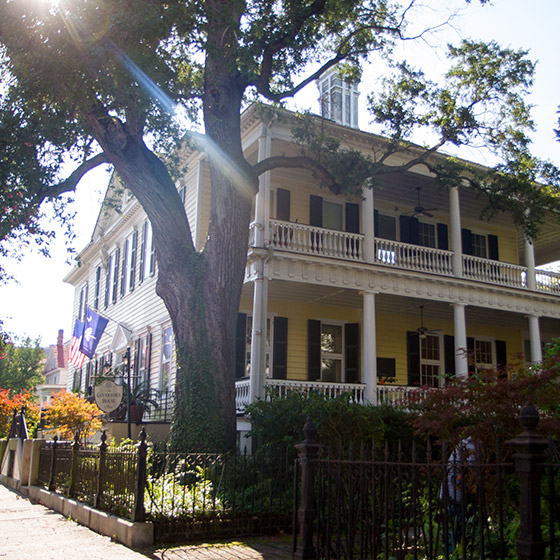
The Edward Rutledge House
My last post addressed the John Rutledge House; I return to the Rutledge family in this post, highlighting the house across the street which John’s younger brother, Edward Rutledge, owned and lived in.
117 Broad Street was built around 1760 by James Laurens. This land was once part of an orange grove (which is why the next street over is called “Orange Street”). Even though the house is pre-revolutionary, Edward Rutledge did not live there before or during the American Revolution.
The house has enjoyed an interesting array of past owners, and at one point even served as a convent. The Cathedral of St. John the Baptist and the residence of the current Roman Catholic Bishop are both situated to either side of the John Rutledge House across the street. Obviously the Catholic church has bought and sold various properties in close proximity to the Cathedral throughout the years.
The first owner of 117 Broad Street, James Laurens, was a merchant and a member of another illustrious “founding father family.” His brother Henry Laurens was President of the Continental Congress and was imprisoned in the Tower of London during the American Revolution. Henry’s freedom came when he was exchanged for British General Cornwallis near the end of the war. James Laurens and his family moved to Europe at the beginning of the Revolutionary War, and he later died in France.
However, this house is primarily known for its association with Edward Rutledge, one of four South Carolinians to sign the Declaration of Independence. Rutledge is also said to be the youngest signer at 26 years of age. Along with fellow signers Arthur Middleton and Thomas Heyward, Rutledge was arrested by the British on their occupation of Charles Town in 1780 and imprisoned in the Provost Dungeon at the Old Exchange Building until the three were shipped out with other Charleston patriots to be imprisoned at St. Augustine.
After the war, Rutledge, having received his law degree in England prior to the war, enjoyed a successful law career and eventually became involved in politics. He was elected governor of South Carolina in 1798, but unfortunately died in office in 1800.
If you picture the house without the wing additions, one of which is the west piazza (the east piazza was later remodeled into rooms), then you will have a good idea of what this wooden Georgian-style home looked like in 1760 and later in 1788 when Edward Rutledge purchased it from James Lauren’s estate. The center portion of the house is the oldest part, and the interior is lovely with a portrait of Edward Rutledge in the hall. I had the pleasure of volunteering at 117 Broad Street as a docent during the Preservation Society’s fall tours several years ago. Being there gave me not just a heightened awareness of my city’s history, but also of the history of my nation’s birth.



